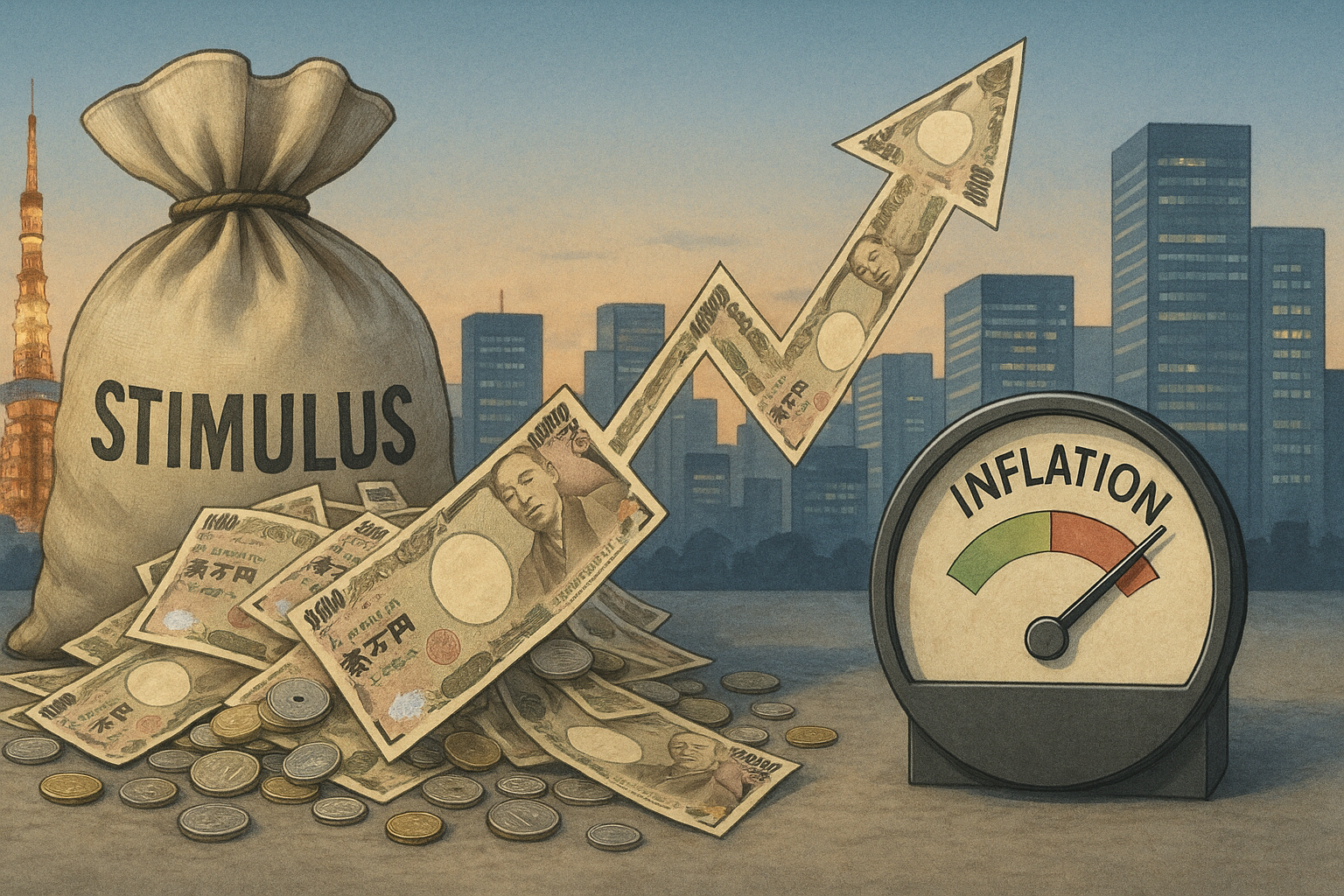Japan is about to try something that sounds completely bonkers on its face: fighting inflation with more government spending.
I know, I know. It seems contradictory—like trying to lose weight by eating extra dessert. But that's exactly what Japan's incoming Prime Minister is reportedly cooking up.
The proposed stimulus package comes as ordinary Japanese households are feeling the squeeze. Inflation has been outpacing wage growth (a particularly painful combination), and the yen has been performing about as well as a paper umbrella in a typhoon. Not great.
Here's the kicker, though: Japan spent the better part of two decades begging for inflation. Literally years of economic policy specifically designed to generate rising prices. And now that they've got it? Well, turns out it's not exactly the economic panacea they were hoping for.
Look, there's a method to this apparent madness. The traditional economics textbook says stimulus fuels inflation, but Japan's situation is... complicated. What we're seeing isn't demand-driven inflation but largely imported price pressures through energy and food, combined with that aforementioned weak yen.
The theory—and I stress theory—is that targeted government spending could actually ease inflationary pressures by addressing supply bottlenecks and boosting productivity. Sort of like a controlled burn in forestry. Sometimes you fight fire with fire.
I've followed Japan's economic experiments for years, and if there's one thing I've learned, it's that conventional wisdom often fails when applied to this particular economy.
The timing is fascinating. Japan just emerged from negative interest rates after the Bank of Japan's rate hike in March. That ended an extraordinary era of ultra-loose monetary policy that would make most central bankers break out in hives. This fiscal push suggests a tag-team approach—monetary policy tightens (slightly), while fiscal policy loosens.
Japan continues to be the world's economic laboratory. Twenty years ago, economists viewed Japan's deflation battle as some exotic case study. Now? As more countries face similar demographic challenges and debt loads, Tokyo's unconventional playbook gets serious consideration.
Will it work? That depends entirely on execution.
Infrastructure spending that boosts productivity? Potentially helpful. Direct cash transfers that simply juice demand for already scarce goods? That's playing with matches at a gasoline convention.
There's also the not-insignificant matter of Japan's public debt, which already exceeds 260% of GDP. Adding more to that mountain requires either extraordinary confidence or extraordinary desperation (or perhaps a healthy dose of both).
Japan has defied debt doomsayers for decades now, borrowing at rock-bottom rates despite debt levels that would trigger financial meltdowns almost anywhere else. Most economists point to Japan's domestically-owned debt as the saving grace, but... conventional wisdom has been wrong before. Remember when everyone was absolutely certain Japanese interest rates had to rise in the early 2000s? Or the 2010s?
The hard truth is that Japan has precious few easy options left. With its rapidly aging population, persistent growth challenges, and inflation now eating away at stagnant wages, policymakers are reaching deeper into the unconventional policy toolkit.
I spoke with several economists last month who confirmed what many Japan-watchers suspect: this is economic desperation dressed up as innovation.
"Japan is running out of road," one told me, requesting anonymity because his firm does business with the Japanese government. "But they've been 'running out of road' for 20 years now, so who knows?"
Fighting inflation with stimulus might seem contradictory, but in Japan's economic funhouse of mirrors, contradictions have a way of becoming policy orthodoxy.
We'll find out if adding more fuel to the economic fire actually helps put it out. Stranger things have happened in Japan before.
